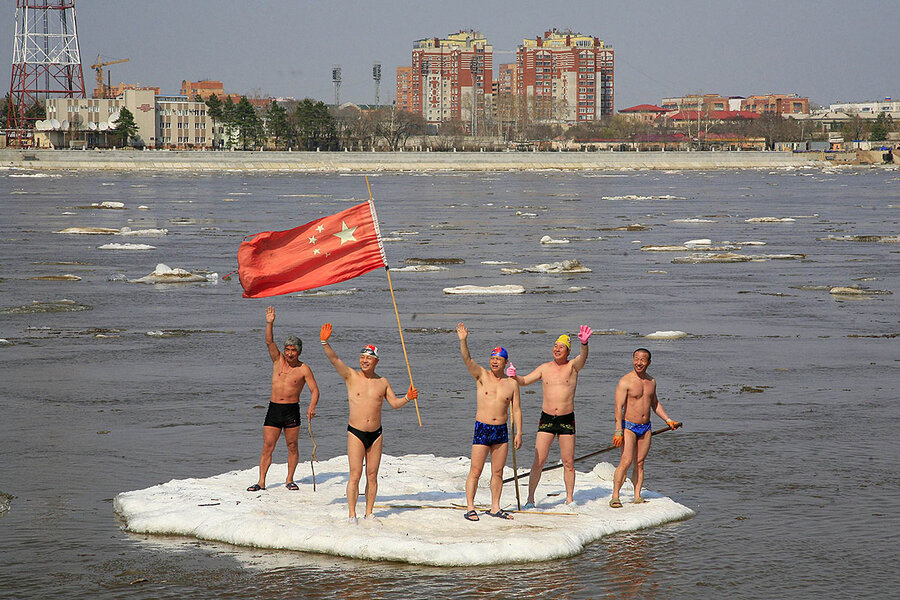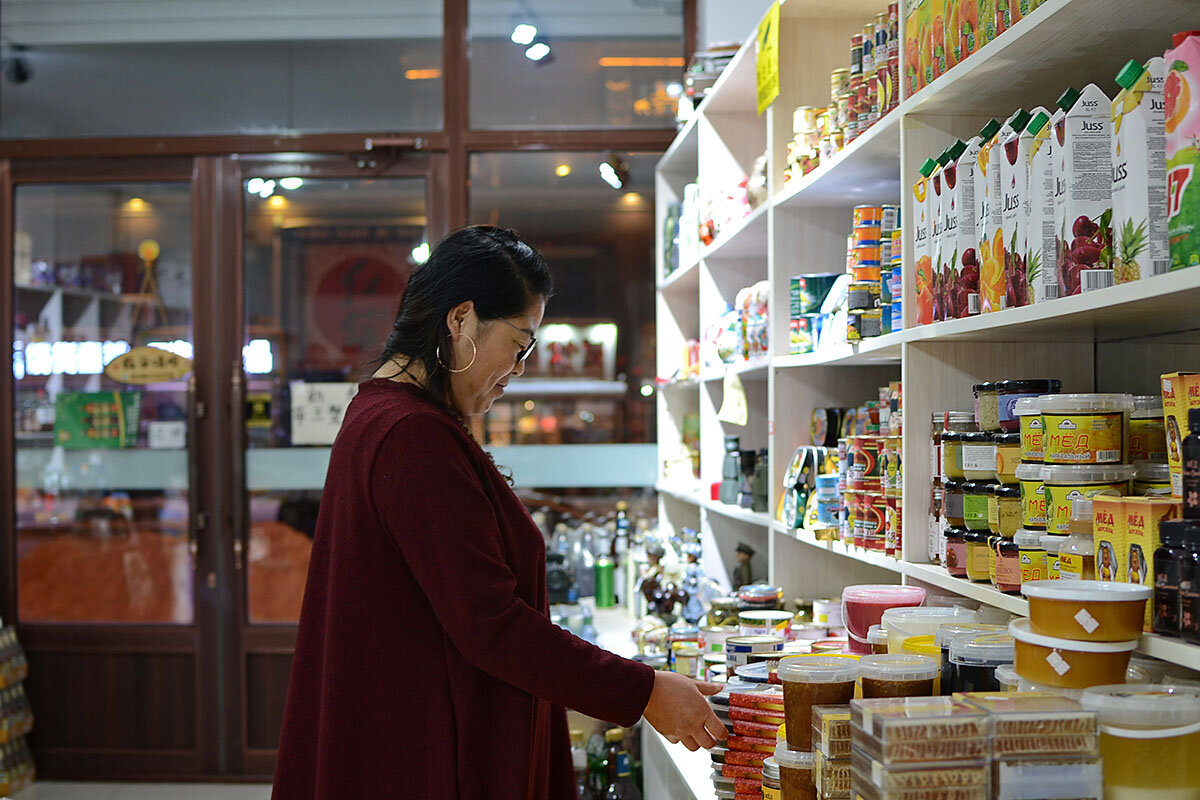China's rust belt gets long-awaited bridge to Russia. But is it still a lifeline?
Loading...
| Tongjiang, China
Ms. Zhu had heard about the nearby rail bridge long before she and her husband decided to move to this city in the frigid northeast corner of China. It’s been talked about across the region for the past decade: nearly one-and-a-half miles of steel and concrete that, when completed, will span the width of the Amur River and become a vital new trade route between China and Russia.
But just in case she had forgotten, a billboard on the outskirts of Tongjiang presents a turgid reminder: “Seize the opportunities of the bridge network era and achieve the goals of a well-off society.”
It’s the promise of economic opportunity that led Zhu and her husband to leave their rural village for Tongjiang in March. They’ve since opened a small convenience store on the city’s main street, eagerly waiting for the bridge to open and bring with it new customers.
“The bridge should be good for the local people,” says Zhu, who gave only her family name. “But finishing it depends on Russia,” she adds, expressing a sense of impatience shared by many people in this city of 210,000.
That impatience is largely directed at Moscow’s delay in building its own section of the bridge – a delay that exposes the gaps in Russia and China’s strategic partnership. But the frustration felt by Zhu and other Tongjiang residents has been compounded by a deepening economic malaise in China's northeast. For them, the bridge represents the lifeline they’ve been waiting for.
Still, it’s a lifeline dreamed up for a different Chinese economy – one that looks increasingly outdated, as residents in cities like Tongjiang worry that the country’s economic transformation could leave them behind.
A shifting economy
Known as the country’s rust belt, northeastern China is dotted with empty coal mines and abandoned steel mills. The three provinces that make up the region have been among China’s worst performing in recent years, as they’ve struggled to overhaul bloated state-owned enterprises and reduce their dependency on heavy industries.
Although the bridge isn’t expected to dramatically transform the region’s economy – moving away from coal and streel production will likely take years – it will provide a much-needed boost, analysts say. It’s designed to carry 21 million tons of cargo a year.
“Any economist will tell you that more connectivity is always good for trade,” says Artyom Lukin, an associate professor of international relations at the Far Eastern Federal University in Vladivostok, Russia. “It’s not going to save northeast China from its current problems, but it will certainly help.”
The region’s economic slump stems from its abundance of state-owned coal and steel firms that are saddled with excess capacity due to decreased demand. As China tries to curb its reliance on credit-fueled investment and government spending, Beijing has pledged to make “structural reforms” that could throw even more millions of people out of work by closing down inefficient mines and factories.
It was in the middle of a Chinese industrial boom that plans for the Amur River bridge got under way. Back then, in the mid-2000s, the role of the bridge in the country’s economy was obvious: It would provide the raw materials needed to maintain economic growth. But construction on the bridge didn’t start until 2014. By then, China’s economy was growing at its slowest rate in a quarter century.
The original plan was for the bridge to open by the end of 2016. China finished its section on time, but funding shortages delayed the Russian side for years. Construction picked up again earlier this year after China agreed to help with the financing.
End in sight?
The bridge is now scheduled to open in June, according to Xinhua, the official Chinese news agency. When it does, it will become the first of any kind to connect China and Russia across an almost 2,000-mile-long stretch of frontier. (A highway bridge farther north is scheduled to open in October 2019.)
The pick-up in construction comes as Russia begins to emerge from a difficult recession. Trade between Russia and China has started to pick up after a two-year downturn. Two-way trade volume reached $61.38 billion in the first nine months of this year, a 22.4 percent increase from the period last year, according to China’s Ministry of Commerce.
It remains to be seen, however, how the bridge fits into Beijing’s plan to shift the economy toward a more consumer-driven growth model. Starting last year, the Tongjiang government has promoted the bridge as an important addition to China’s One Belt, One Road initiative, a landmark program intended to establish new trade routes between Asia, Africa, and Europe. The bridge will link China's northeast railway network with Russia's Siberian railway network, providing a new connection to European markets.
Liang Qidong, vice president of the Liaoning Academy of Social Sciences and an expert on the economy of northeastern China, says the opening of the bridge will bring with it more jobs and investment to Tongjiang and the surrounding region. He says it will become a major trading hub for goods flowing in and out of China.
That’s the kind of forecast locals want to hear. More economic activity in Tongjiang also means more customers for shop owners like Lü Yuxiang, whose cluttered store is filled with goods from across the border. There are, of course, the standards: Russian caviar, vodka, and nesting dolls. Then there are the more unusual wares. One shelf is filled with camouflage binoculars, and slingshots hang on the wall behind the front counter. After years of struggling to get by, she has high expectations for the future.
“When the bridge opens, we will have a logistics park in Tongjiang just beside the border,” Ms. Lü says. “Then big companies will move to here to do business. In this way it will help the economy.”
But first, Russia needs to finish building the bridge. On a recent morning, the entrance to it on the Chinese side was closed because of heavy snow. A nearby customs building stood empty, waiting for a train that has yet to come.
Xie Yujuan contributed reporting.






